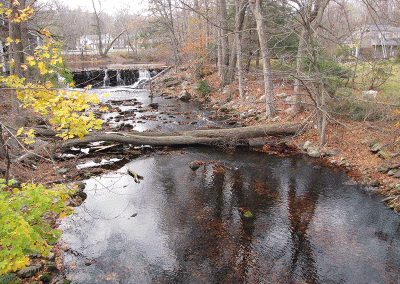Maintain Your Septic Regularly
Norwalk River Watershed Association


Simple logical care of your septic system can keep people and properties healthy, protect the water quality of the river, prolong the septic system’s life, and save on very costly repairs.
Ten Easy Steps to a Healthy Septic System
Failing septic systems can make you or someone you know sick by polluting your well or a neighbor’s well, can threaten the health of children and pets playing in the effluent, and can make waterways green with slime. Simple logical care of your septic system can keep people and properties healthy, prolong the system’s life, and save on very costly repairs. If you are like most people, your home is your biggest asset, so it makes sense – in terms of health, economics, the environment, and both personal and community responsibility – to understand how a septic system works and how to take proper care of it.
Signs of a Failing Septic System
The signs of failure are obvious: sewage odors, slow-draining toilets or drains, and lush grass or slimy sewage over the septic field, especially after a rainstorm or in a wet spring.
How Does a Septic System Work?
In the simplest terms, soiled water or effluent either runs by gravity or is pumped from your house to a holding tank where heavier solids settle to the bottom and the lighter liquid gradually seeps out into the septic fields. There natural biological reclamation, absorption, and evaporation render the liquid harmless over time. There are various system designs, but the general principles remain the same. In newer tanks, baffles direct the effluent downward into the first chamber while lighter liquids float into the second half of the chamber. Another baffle before the outlet pipe to the leaching field tries to keep the solids from escaping and clogging the drainfields. [The very newest tanks have a warning baffle system that will back the effluent back up into the house – if the tank is not pumped when full – rather than have the solids clog and destroy the field.] As more and more homes are built and the land available has more constraints, it is important not to have to rely on reserve areas for the septic fields because some of them are not readily accessible and would be very expensive to prepare.
Ten Easy Steps to a Healthy Septic System
These basic, practical Do’s and Don’ts for regular maintenance are very easy to remember and to implement.
- Locate and map your tank and field (perhaps with your Health Department’s help) and keep a record of work done to the system.
- Pump your tank every 2 to 3 years to prevent scum and sludge from clogging your field – more often if soils and heavy use warrant it.
- Conserve water to avoid flooding the system. Fix leaks, stagger laundry loads each day, avoid long shower, use water restrictors in showers, faucets, and toilets.
- Don’t discharge water from hottubs or other highly chlorinated water into the system.
- Do not pollute or clog your tank with hazardous chemicals or nonbiodegradable elements: no grease, diapers, feminine sanitary products, kitty litter; no gas, paint thinner, oil paint, pesticides, antifreeze. Do not use tank additives. Use bleach, drain, and toilet cleaners sparingly lest they kill the good bacteria that cleanse the effluent.
- Don’t use a garbage disposal. The tiny particles it creates will clog fields. If you must use one, be prepared to pump more frequently.
- Don’t discharge water softeners to the system. Increased salts in the groundwater can elevate blood pressure and be hazardous to health.
- Direct surface water away from your tank and septic field.
- Prevent heavy machinery and vehicles from driving over your tank and drainfields, thereby crushing the piping and compacting the soil. Plant and mow grass over your fields, avoid bushes and trees whose roots can clog and break your pipes and fields.
- Use a licensed professional for any septic repair or service. Your Health Department can give you a list of reputable companies.
Advantages of a Septic System over a Sewer
Unless you live in a highly populated area or a place with unacceptable soils or other topographic constraints, a septic system is your best option. If properly installed and maintained, your system should cost far less to maintain because there are no monthly sewer fees, only the less expensive cost of pumping out the tank every two or three years, although a limited system or one with very heavy use may require more frequent pumping. A septic system treats the effluent naturally and lets the water seep into the ground, keeping moisture on site to help plants grow and to gradually replenish the water supply. In contrast, sewers treat the effluent and release it to a river which, in our area of the state, flows to Long Island Sound, where the water becomes salty and undrinkable. Areas with septic systems require larger house lots, so there is more room for gardens, playing, and a more rural feeling.
Summary
The facts are that a properly installed and maintained septic system is less expensive to run than a hookup to a sewer system with monthly fees; and the septic system keeps the water used in the area, where it is cleansed and reclaimed over time, thus making it available for a constantly replenished groundwater and drinking water supply. For further information, check appropriate water quality links on this website.
For further information visit the New Products Page on the National Small Flows Clearinghouse Web Site.
Septic Tank friendly Cloverwash and Cloverdish from Cloverdale, Inc are two great citrus-based, non-phosphate, and completely biodegradable options to traditional cleaning products.
